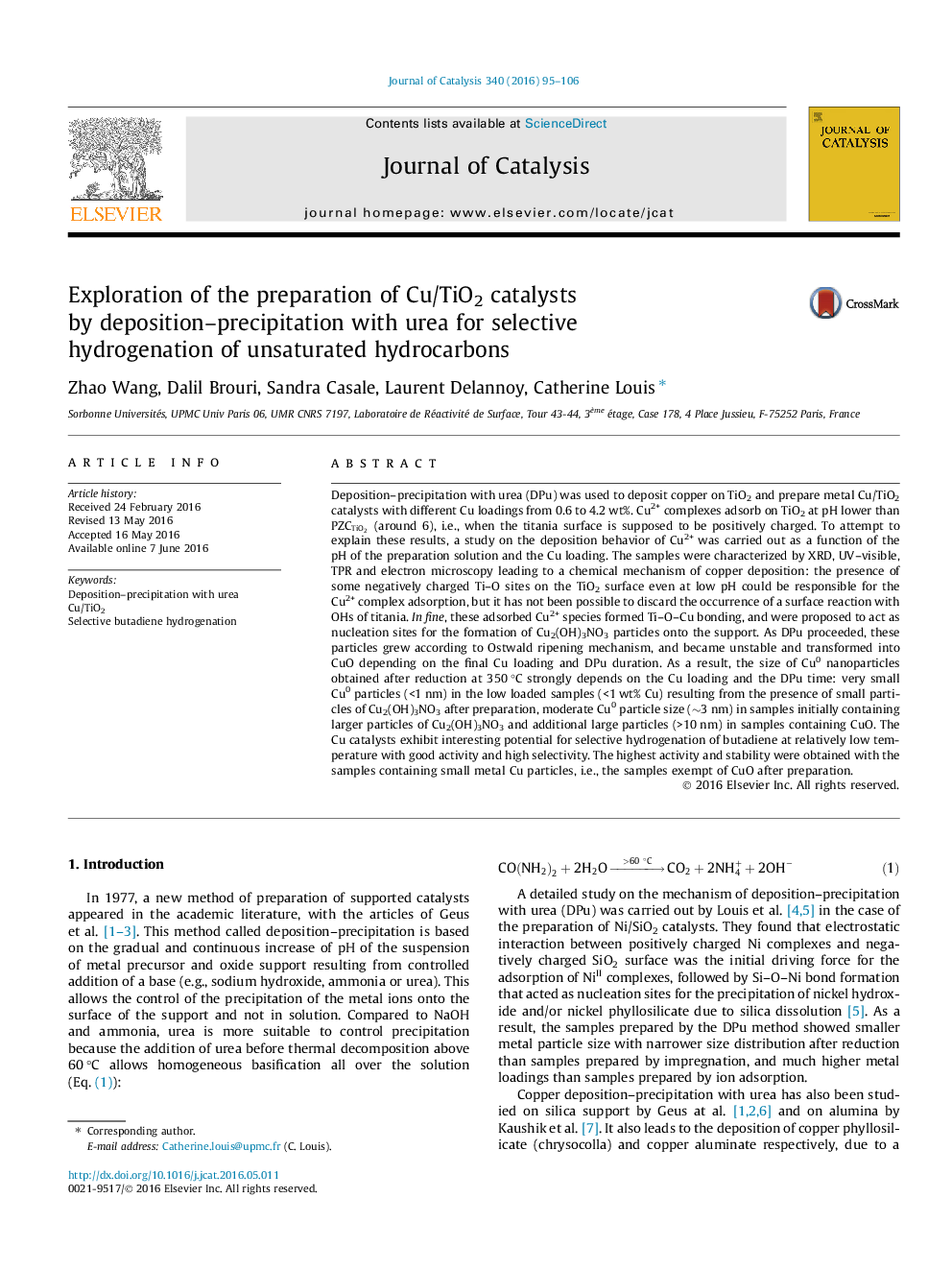| کد مقاله | کد نشریه | سال انتشار | مقاله انگلیسی | نسخه تمام متن |
|---|---|---|---|---|
| 60512 | 47535 | 2016 | 12 صفحه PDF | دانلود رایگان |

• Cu2+ deposition on TiO2 surface occurs at pH lower than the PZC of TiO2.
• During DPu, Cu2(OH)3NO3 is submitted to Oswald ripening and decomposes to CuO.
• Supported Cu2(OH)3NO3 leads to small Cu particles, while CuO leads to large ones after reduction.
• Cu/TiO2 is highly selective in BD hydrogenation to butenes.
• Small Cu particles (ex-Cu2(OH)3NO3) are more catalytically active and stable than large ones (ex-CuO).
Deposition–precipitation with urea (DPu) was used to deposit copper on TiO2 and prepare metal Cu/TiO2 catalysts with different Cu loadings from 0.6 to 4.2 wt%. Cu2+ complexes adsorb on TiO2 at pH lower than PZCTiO2PZCTiO2 (around 6), i.e., when the titania surface is supposed to be positively charged. To attempt to explain these results, a study on the deposition behavior of Cu2+ was carried out as a function of the pH of the preparation solution and the Cu loading. The samples were characterized by XRD, UV–visible, TPR and electron microscopy leading to a chemical mechanism of copper deposition: the presence of some negatively charged Ti–O sites on the TiO2 surface even at low pH could be responsible for the Cu2+ complex adsorption, but it has not been possible to discard the occurrence of a surface reaction with OHs of titania. In fine, these adsorbed Cu2+ species formed Ti–O–Cu bonding, and were proposed to act as nucleation sites for the formation of Cu2(OH)3NO3 particles onto the support. As DPu proceeded, these particles grew according to Ostwald ripening mechanism, and became unstable and transformed into CuO depending on the final Cu loading and DPu duration. As a result, the size of Cu0 nanoparticles obtained after reduction at 350 °C strongly depends on the Cu loading and the DPu time: very small Cu0 particles (<1 nm) in the low loaded samples (<1 wt% Cu) resulting from the presence of small particles of Cu2(OH)3NO3 after preparation, moderate Cu0 particle size (∼3 nm) in samples initially containing larger particles of Cu2(OH)3NO3 and additional large particles (>10 nm) in samples containing CuO. The Cu catalysts exhibit interesting potential for selective hydrogenation of butadiene at relatively low temperature with good activity and high selectivity. The highest activity and stability were obtained with the samples containing small metal Cu particles, i.e., the samples exempt of CuO after preparation.
Figure optionsDownload high-quality image (54 K)Download as PowerPoint slide
Journal: Journal of Catalysis - Volume 340, August 2016, Pages 95–106